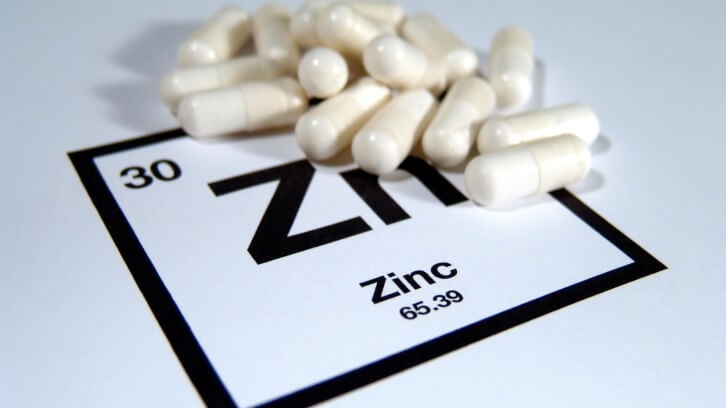Glycoprotein matrix delivery system may boost zinc bioavailability by 40%

Data from a human study, published in Nutrients, indicated that the glycoprotein matrix zinc was 40% more available than zinc oxide.
The study was funded by Ashland using its GPM zinc ingredient. Ashland offers a wide range of GPM vitamins and minerals produced from a “nutrient-dense broth that is cultured, converted and bio-transformed by microorganisms (yeast and/or probiotics),” according to the company’s website.
The GMP zinc used in this study was produced using Saccharomyces cerevisiae (yeast) and Lactobacillus and Bifidobacteria strains, explained the researchers, led by Dr. Ralf Jäger from Milwaukee-based Increnovo.
“Due to the heat during the drying process, the probiotics used during manufacturing were not viable (heat-killed); however, they remained in the final product,” they wrote. “Postbiotics (derived from Greek, ‘post’, meaning after, and ‘bios’, meaning life) are dead bacteria or cell fragments, generated through a deliberate “killing” process such as lysis, pressure, radiation or, in the case of GPM, heat […]. Postbiotics, inanimate microorganisms and microbial cell fragments have been shown to provide numerous health benefits, including improved nutrient absorption and immune and gastrointestinal health, even while the bacteria are no longer alive.”
Science-backed claims
Commenting on the new study, Maxine Weber, director of marketing, nutraceuticals for Ashland, told us that this is the first human study using the GPM ingredients, building on a significant body of pre-clinical data. “We know that it is really important to our customers and their consumers that all of our claims are backed by science,” she said. “This is the most recent human study, but another is in the field and will hopefully be ready for publication in a couple of months; with more studies in the works.”
Weber noted that, while the original GPM ingredients have been on the market for a while, Ashland has continued to innovate and expand its portfolio. Fermented nutrients appeal to a few different types of consumers, she added, particularly those interested in natural and organic products. Several of the newest product offerings meet the USDA organic requirement.
"What we see in the market is growth in women’s health products," Weber said. "One important segment is women who are pregnant. At that time, women are being very careful; they are looking for high quality ingredients in their prenatal vitamins. GPM nutrients have an added benefit—they are easier on the stomach.
"In the process of making the fermented nutrient, the vitamin or mineral is bound to the food matrix, making it all more like food. This results in less stomach upset, and you can certainly take these on an empty stomach."
Study details
Dr. Jäger and his co-workers recruited 16 people and randomly assigned them to consume 11 mg of zinc as either GPM zinc or zinc oxide. The result showed that the GPM zinc concentrations were significantly higher at two, three and four hours after ingestion compared to zinc oxide.
Absorption was 40% for the GPM zinc than for the zinc oxide, the researchers added.
"Zinc bound to a glycoprotein matrix significantly increases absorption compared to zinc oxide when observed as peak concentration and area under the curve," the researchers concluded. "This observed improvement in absorption was well-tolerated in the gastrointestinal tract."
Source: Nutrients
2024, 16(7), 1012; doi: 10.3390/nu16071012
“Glycoprotein Matrix Zinc Exhibits Improved Absorption: A Randomized Crossover Trial”
Authors: R. Jäger et al.












